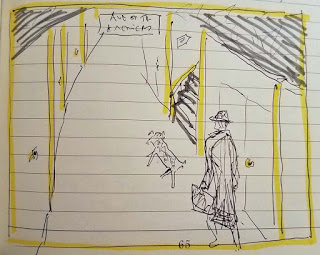He lives in a world lit
mostly by fire. The Roman Empire has recently been split into two. Rome, the
capital of the West, will soon fall to the Goths. The barbarians are inside the
gates of Constantinople, the capital of the East. His home city of Cyrene, in
what is now Libya, is under constant attack by marauding tribes; he is often up
on the walls, standing sentinel, or training his neighbors and retainers to
fight back.
He comes from a noble
family that can trace its lineage back to the founders of Sparta. He has the
best education of his day; he studied with Hypatia, the great woman philosopher
and scientist of Alexandria. In brief seasons of peace, he enjoys riding around
his estates, sampling the olive oil and the honey from his bees and the milk
from his goats. His great loves are books - in an age where nearly everyone is
illiterate - hunting and dreaming. His name is Synesius of Cyrene, and we
should know it better, because around 404 he wrote a treatise On
Dreams that is (in my opinion) the most helpful book on the practice
of dreamwork to appear in the West until very recent times.
In an era when the great
oracles of the ancient world are being overthrown, Synesius reminds us that
dreams provide us with "a personal oracle" that goes with us
everywhere. All we need do is pray for a dream, wash our hands, and set our
heads on a pillow. Dreaming matters because it shows us the future, provides
creative inspiration, reveals different aspects of who and what we are, offers
guidance on all the business of life - and above all, because it "uplifts
the soul", raising us from our everyday confusion towards the level of
Mind.
As a writer and orator,
Synesius reports on how dreams corrected his literary style and gave him ideas
for speeches that allowed him to catch the ear of an emperor. He observes,
correctly, that recording and telling dreams is great preparation for public
speaking, because it gives us training in telling our stories well. Some of
that story material is of course extraordinary and challenges us to expand our
ways of expression: "It is no mean achievement to pass on to another
something of a strange nature that has stirred in one's own soul."
As everyday practice,
Synesius urges us to practice dream incubation (asking our dreams for
guidance), to study personal markers or "forerunners" in dreams that
clue us in to whether those dreams may reveal future events, and above all to
journal our experiences. He advises us to keep both a "book of the
night" for dreams and a "book of the day" for our observations
of signs and symbols in the world around us. By the universal law of sympatheia "all
things are signs appearing through all things" and "the sage is one
who understands the relationship of the parts of the universe."
For active dreamers, the
very best incitement to go dreaming that Synesius offers may be this soaring
passage in which he encourages us to embark on an adventure that will take us
far beyond the laws of our physical universe:
There is nothing that
forbids the sleeper from rising from earth and soaring above eagles, to reach a
point above the loftiest spheres themselves. He may look down on the earth from
far above, and explore lands that are not visible even from the moon. It is in
the power of the dreamer to converse with the stars and to meet the hidden
powers of the universe.
[my adaptation of the 1930 translation of On Dreams by
Augustine Fitzgerald]
In 410, the formidable
Patriarch of Alexandria, Theophilus, persuaded Synesius to become bishop of
Ptolemais. He was allowed to continue to live openly with his wife, to pursue
his love of the poets who celebrated the old gods, and to practice and write
about philosophy in the way of Plotinus. In the Hymns he wrote in his last
years, we see Synesius making a marriage between the Christian revelation and
Neoplatonist metaphysics, in verses that are sometimes very beautiful (but
still await adequate translation). So we can call Synesius, at least
retrospectively, the Bishop of Dreams. It is heartening to know that the early
Church, in a time of violent contention, could make room for a philosopher who
taught that we can become citizens of the deeper world by dreaming, and should
allow no one to come between us and the sacred source that opens to us in
dreams.
Image: Ruins of Ptolemais














